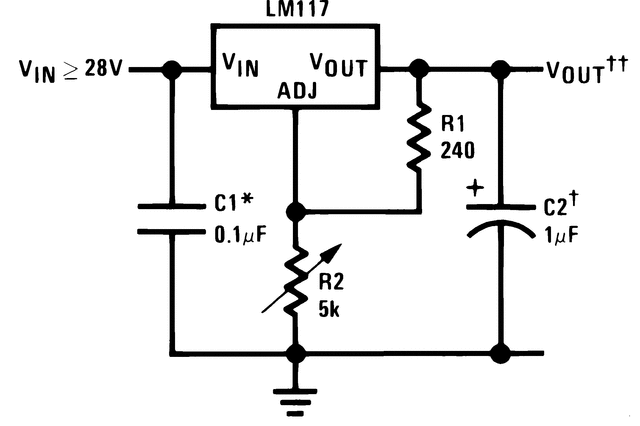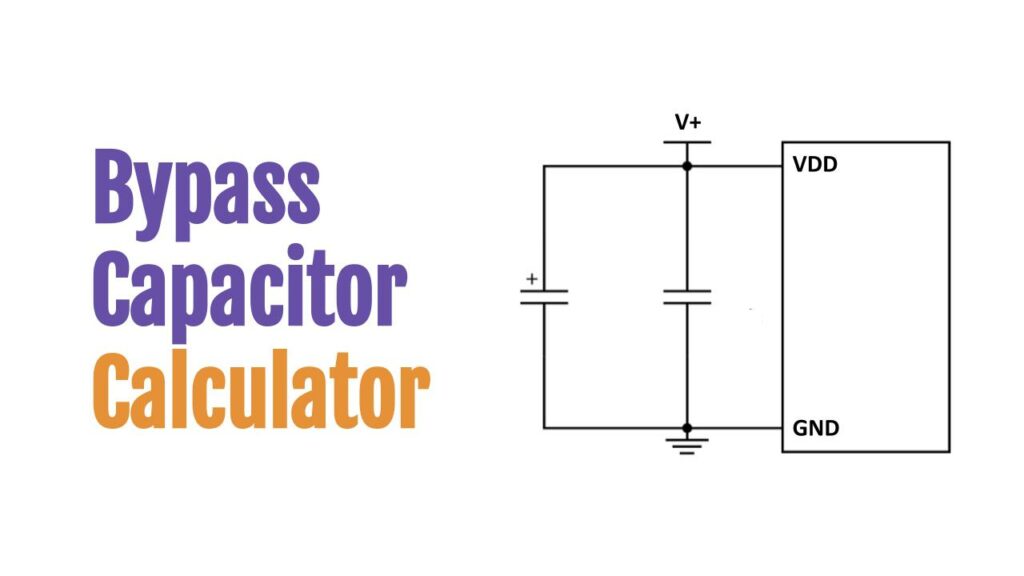A Bypass Capacitor is used to bypass high frequency signals and noise from power supplies. This prevents issues with Electromagnetic Interference (EMI).
This tool provides the capacitor value that is used under the circuit conditions.
Calculator
Enter
- Impedance (Z) of the circuit in ohm. The circuit could be either a power supply module or any other electronic component
- Frequency (fn) of the signal or noise to be filtered out
Formula
C = 1/(2π*fn*Xc)
- Xc is the circuit impedance
- fn is the frequency
Background
In electronics, a bypass capacitor plays a critical role in stabilizing voltage supply and minimizing noise in circuits.
The picture below shows an example of bypass capacitors at the input and output of a linear voltage regulator.

What is a Bypass Capacitor?
A bypass capacitor is an electronic component that provides a low impedance path to high-frequency noise or AC signals, effectively filtering out unwanted fluctuations in the power supply or signal. It is typically placed in parallel with the power supply to “bypass” high-frequency noise away from sensitive components.
Bypass capacitors are used in various applications, such as:
- Stabilizing Power Supplies: Filtering out noise and ripple from DC power sources.
- Decoupling Circuits: Isolating the power supply from other components to prevent interference.
- High-Frequency Filtering: Reducing noise in RF (radio frequency) circuits.
How Does a Bypass Capacitor Work?
The primary function of a bypass capacitor is to smooth out voltage fluctuations and minimize noise in electronic circuits. Capacitors store and release charge to maintain a stable voltage across their terminals. When high-frequency noise or AC components are present in the power line, the capacitor offers a low-impedance path, allowing the noise to pass through the capacitor and return to the ground, thus “bypassing” the sensitive components in the circuit.
In simpler terms:
- At low frequencies, the capacitor behaves like an open circuit, blocking the signal.
- At high frequencies, the capacitor provides a low impedance path, allowing the high-frequency noise to be filtered out.
Choosing the right value for the bypass capacitor is important because it determines how effectively it can filter noise at the desired frequency range.
Related Posts
- Decoupling Capacitor Calculator
- Bypass vs Decoupling Capacitors – What’s the difference?
